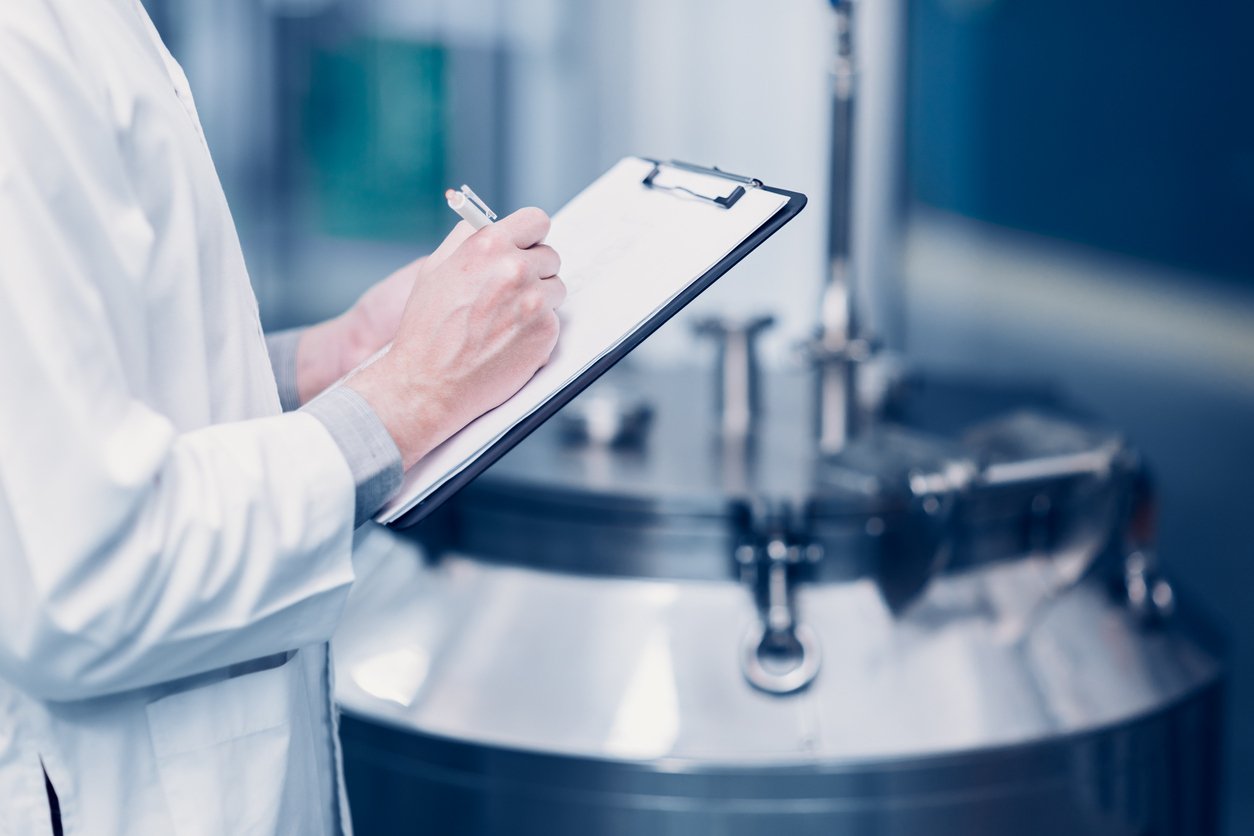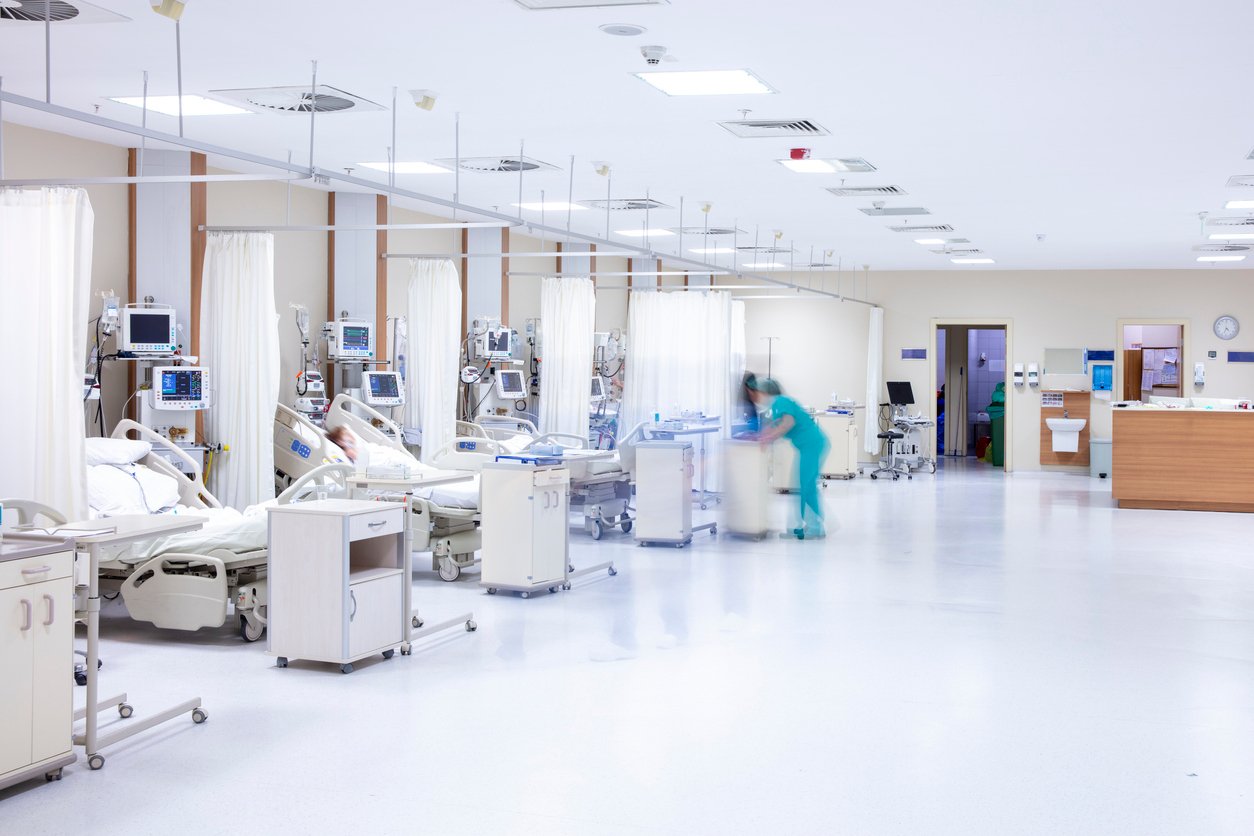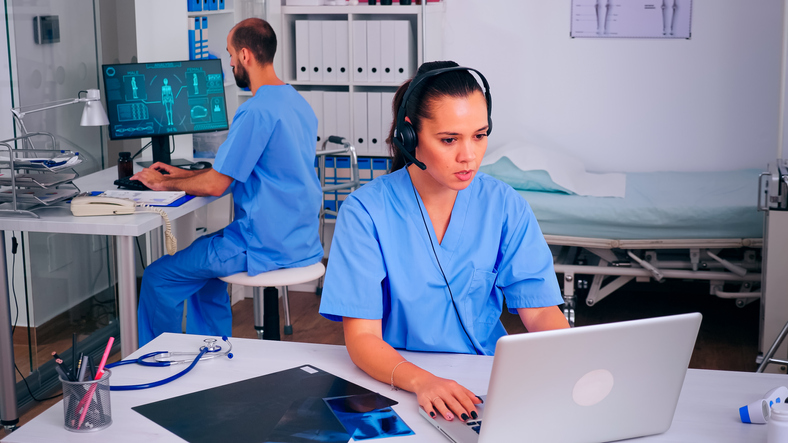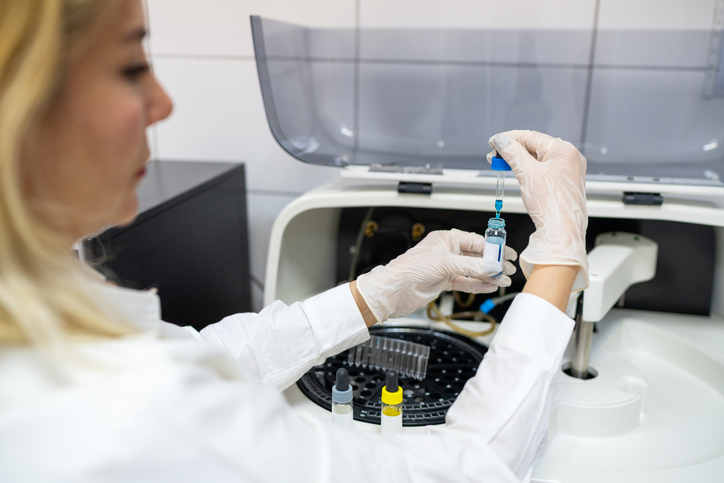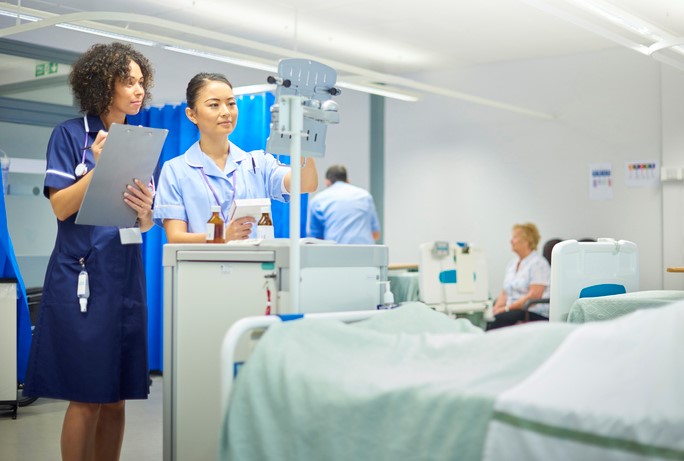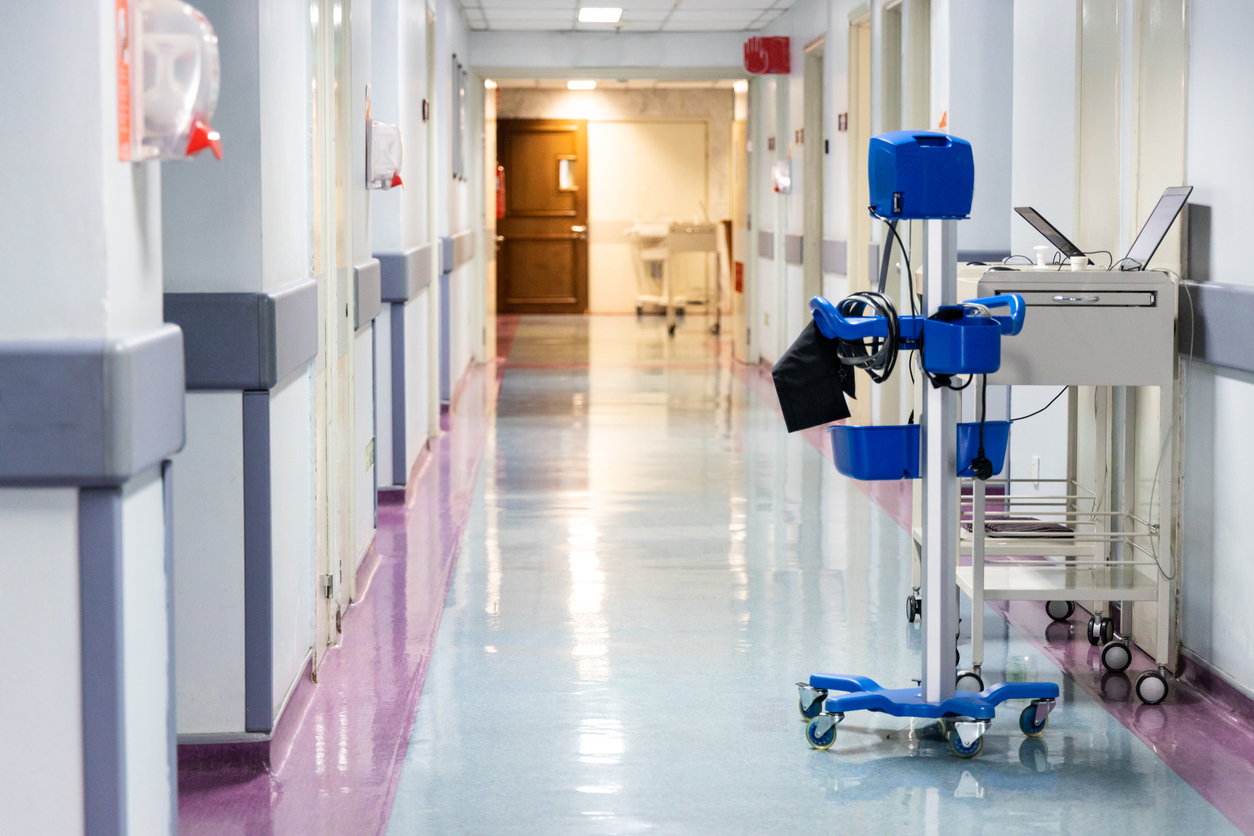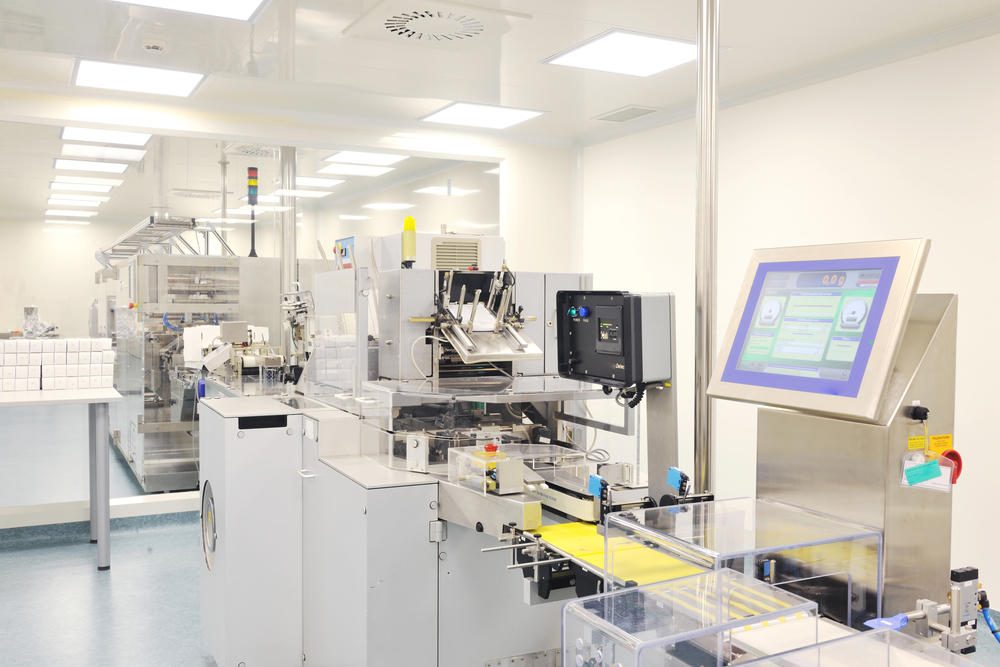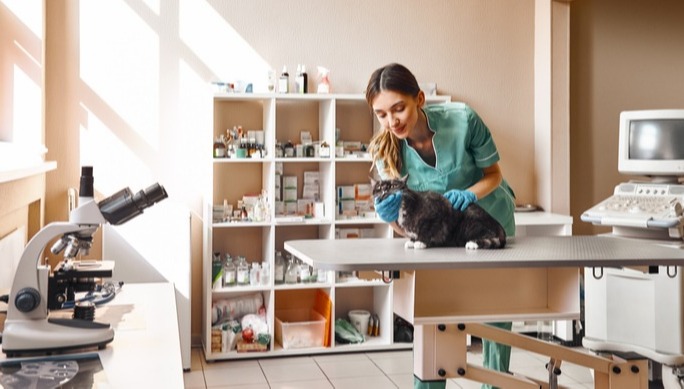Cleanliness is not optional in healthcare environments. Every surface, fastener, and moving component is subject to scrutiny because patient safety depends on it. That reality puts material selection at the center of medical equipment design – not as a final check, but as an early decision that affects compliance, durability, and long-term performance.
Materials Used in Medical Equipment for Compliance & Safety
Topics: Ergonomics, Design, Hinge, Medical Equipment, Safety
Hospital Furniture Standards: What Healthcare Facilities Need to Know
When you walk into a hospital, it’s easy to notice the advanced medical equipment, high-tech monitors, and life-saving devices. Just as important, though often overlooked, are the chairs, tables, cabinets, and beds that fill each room.
Topics: Counterbalances, Ergonomics, Design, Hinges, Medical Equipment, Safety, Hospitality Furniture
Ergonomics in Healthcare Education: Creating A Comfortable Environment
Universities and learning institutions are dynamic environments where knowledge is shared, discoveries are made, and the next generation of healthcare professionals is shaped.
Topics: Applications, Ergonomics, Medical Equipment, Safety, office equipment
9 Medical Ergonomics Improvements for Staff & Patient Care
Hospitals and clinics run on people, the nurses, techs, and doctors who keep everything moving. But that constant movement comes at a cost. Long hours, short breaks, and heavy workloads can wear anyone down, which is why ergonomics in healthcare has never been more important.
When workspaces are designed around the people using them, every shift feels a little safer, smoother, and more sustainable.
Topics: Counterbalances, Applications, Ergonomics, Medical Equipment, Safety, office equipment
Topics: Medical Equipment, Safety, hospitality, Manufacturing, trade shows
6 Benefits of Computer Carts on Wheels for Hospitals
The way health care is delivered in hospitals is changing. Yet every medical center must still meet the same standards of exceptional care.
Topics: Applications, Ergonomics, Medical Equipment, Safety
5 Jobs That Call for Computers on Wheels: Schools, Hospitals, & More
Changes in the way we learn, take care of others, and problem-solve have resulted in demand for more flexible tech at school and work. Computers on wheels (COWs) accomplish just that.
To the uninitiated, computers on wheels are desktops or laptops situated on a powered mobile cart.
Computers on wheels enable professionals in various industries to expand their services, improve patient experiences and outcomes, increase revenue, and transform learning experiences.
Here’s how they can become a viable solution for profitability and efficiency in your office or school!
Topics: Engineering, Push Cart, Medical Equipment, Safety
5 Hinge Design Guidelines for Medical and Science Equipment
Heavy-duty hinges are all about doing a job smoothly and repeatedly without compromising the quality of the overall product. Particularly in medical and scientific applications, hinges are critically essential to the continued functionality of often-expensive equipment.
As a result, there are many hinge design guidelines specific to these industries that can make or (literally) break your project's success. Below, we'll discuss five considerations for heavy-duty hinges, and the guidelines that ensure they function perfectly.
Topics: Motion Control, Hinges, Industrial, Medical Equipment
5 Benefits of Folding Veterinary Treatment Tables & Other Products
Owners hate going to the vet almost as much as the pet itself. And while veterinarians love what they do for a living, their “office” setup usually doesn’t set them up for success.
Topics: Applications, Ergonomics, Medical Equipment, Safety
Vectis™ - Effects of Vertical Distance to the Center of Gravity
So, you’ve decided that a springloaded counterbalance hinge is the ideal way to take your project to the next level. And, you already know that a Vectis™ Counterbalance Hinge can address your specific design challenges and that a Vectis™ counterbalance hinge will outperform and out last a gas spring. But, what technical considerations do you need to make before you click the DYO tab?
To help prepare you for your visit to the DYO app, over the next several months we’ll be discussing some of the technical decisions you’ll need to make in order to design the perfect counterbalance for your project. This month we’re going to discuss the effects of vertical distance to the center of gravity and what that could mean in regard to the ultimate function of your project.
The vertical distance to the center of gravity can have a big impact on how your lid acts near the open position. The greater the positive vertical distance the greater the tendency for the lid to self-open at larger open angles. Conversely, a negative vertical distance allows the lid to be potentially counterbalanced up to the maximum 90° opening angle. If you do not want the lid to coast open at larger angles, consider reducing the maximum opening angle to something close to the balance angle of the lid. The balance angle is the angle of the lid at which the center of gravity is directly above the pivot. If you are looking at the torque chart on the Vectis® DYO app, the balance angle is the point where the lid torque drops to zero.
For applications where the vertical distance to the center of gravity is sizeable, a large opening angle is required, and minimal coast towards the full open position is desired, rest assured that we can meet your needs with a Vectis® Counterbalance Hinge or a Vectis™ Custom Counterbalance.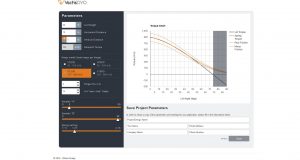
If you’re having trouble specifying a Vectis™ Counterbalance Hinge for your project, give us a call, our engineers are ready to assist you!
Jeremy Redlecki
Product Design Manager
and
Leila Bell
Business Develop Manager
Weber Knapp Company
Topics: Ergonomics, Motion Control, Appliance, Center of Gravity, Counterbalance, Engineering, High End Grill, Hinge, Hinges, Industrial, Lid Support, Smoker Grill, Springloaded, Uncategorized, Vectis, Medical Equipment
.png?width=12000&height=2033&name=WeberKnappLogo_white%20(1).png)
